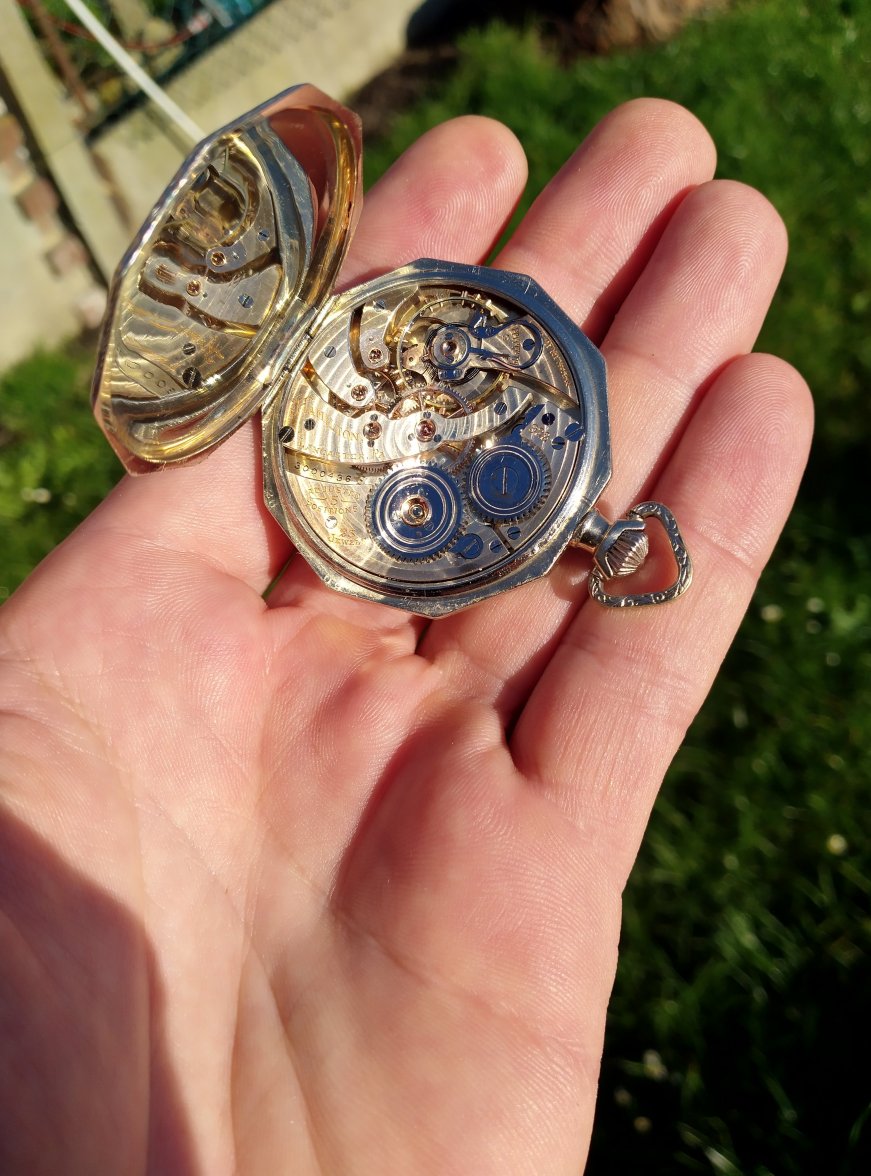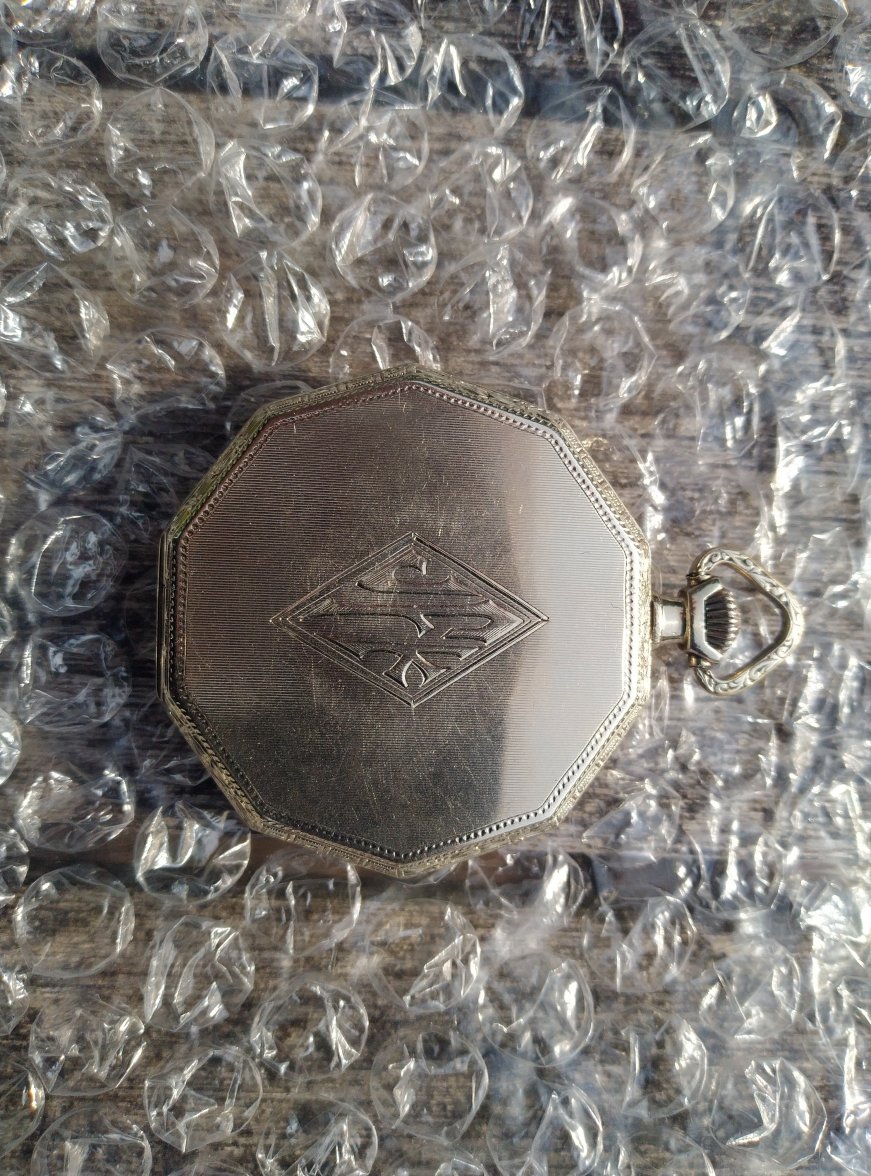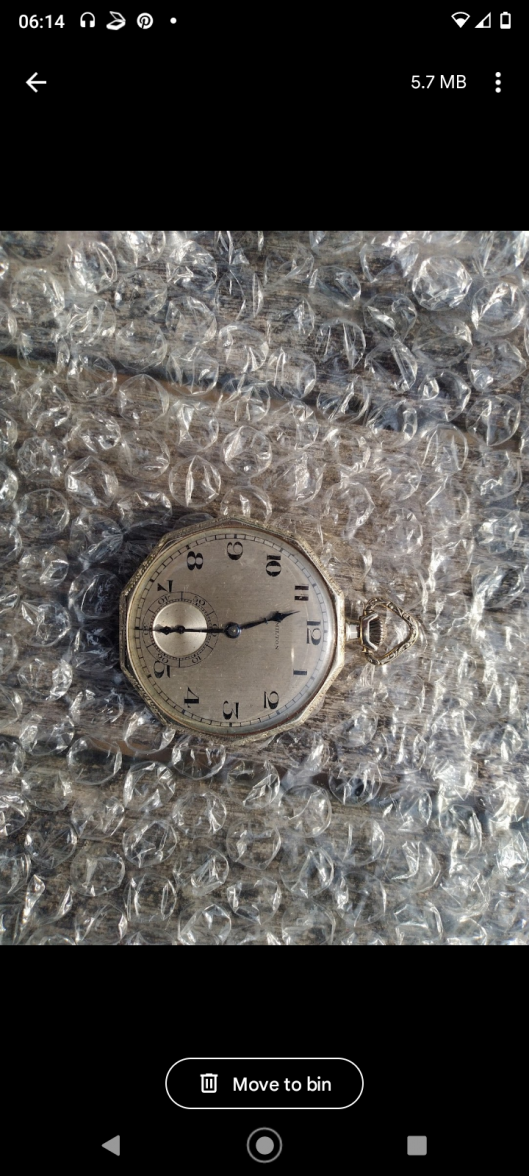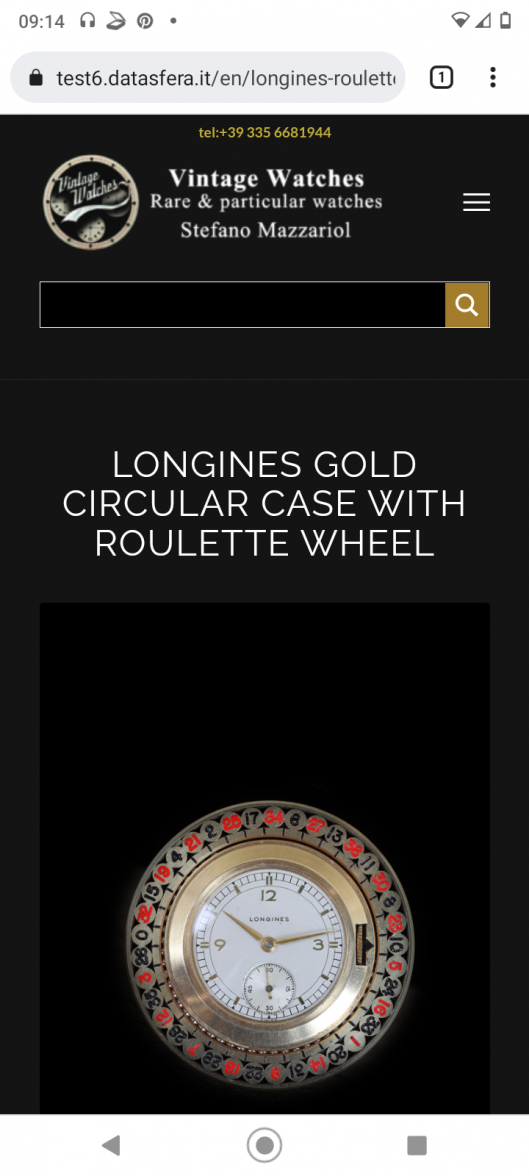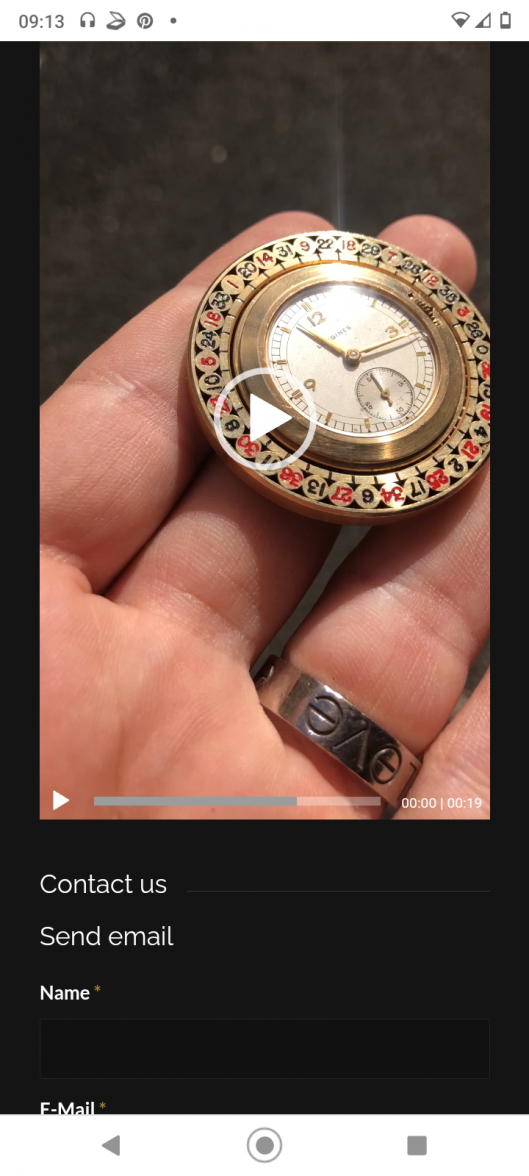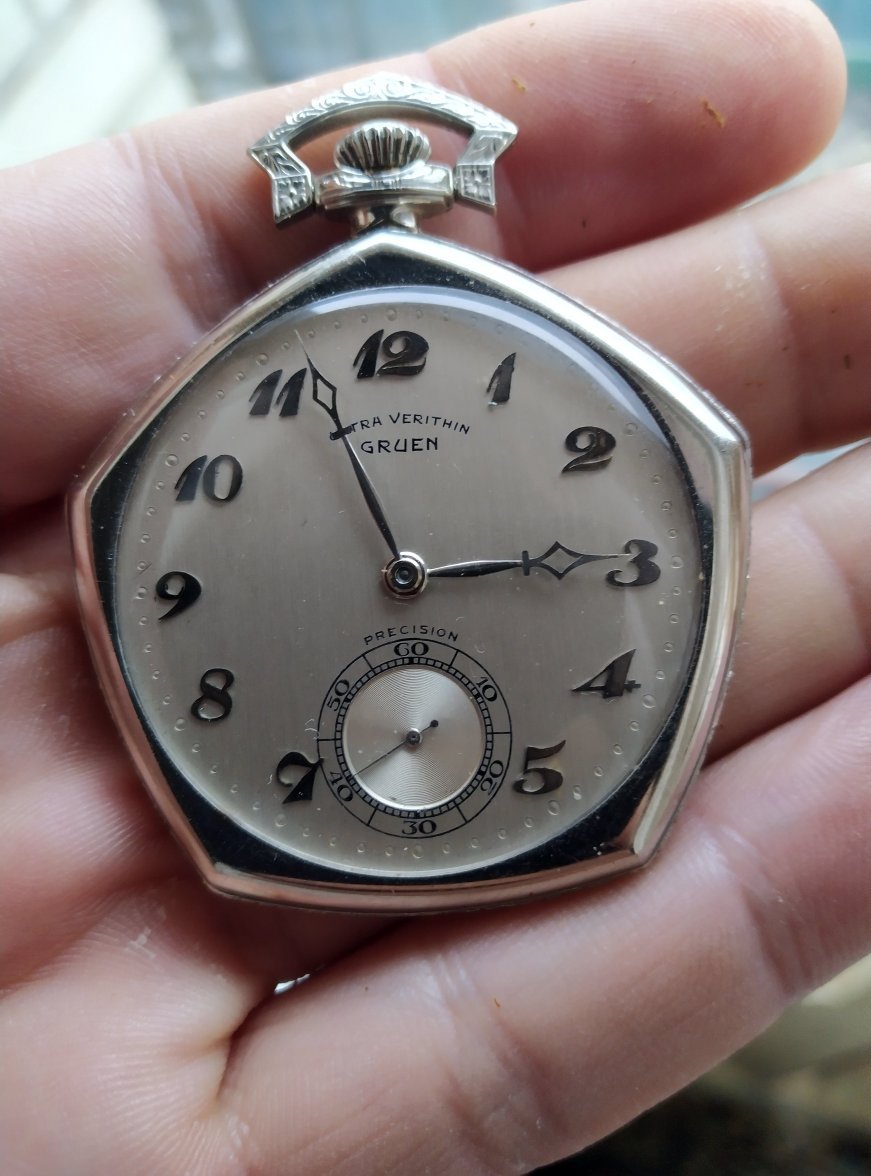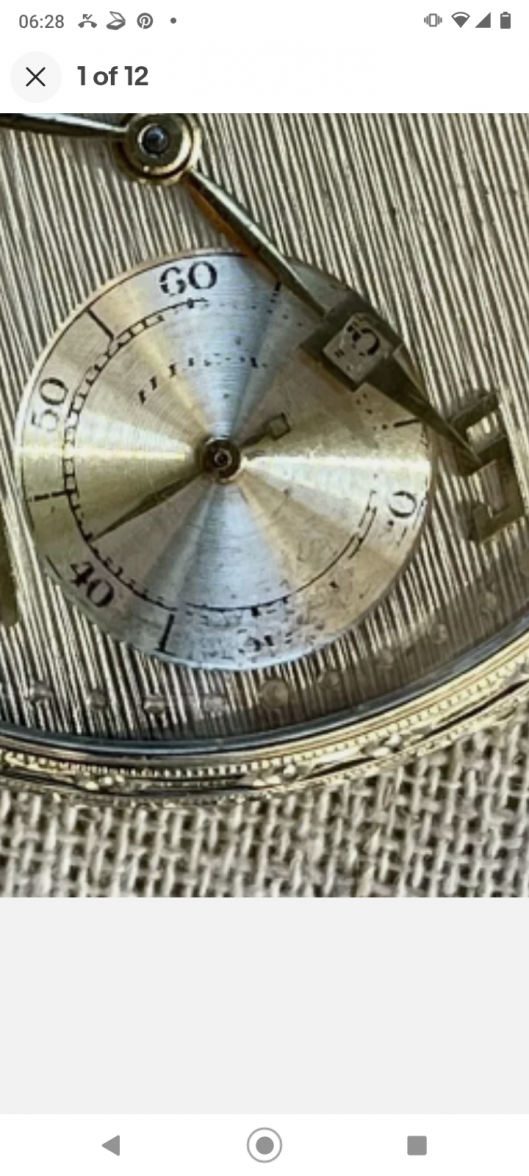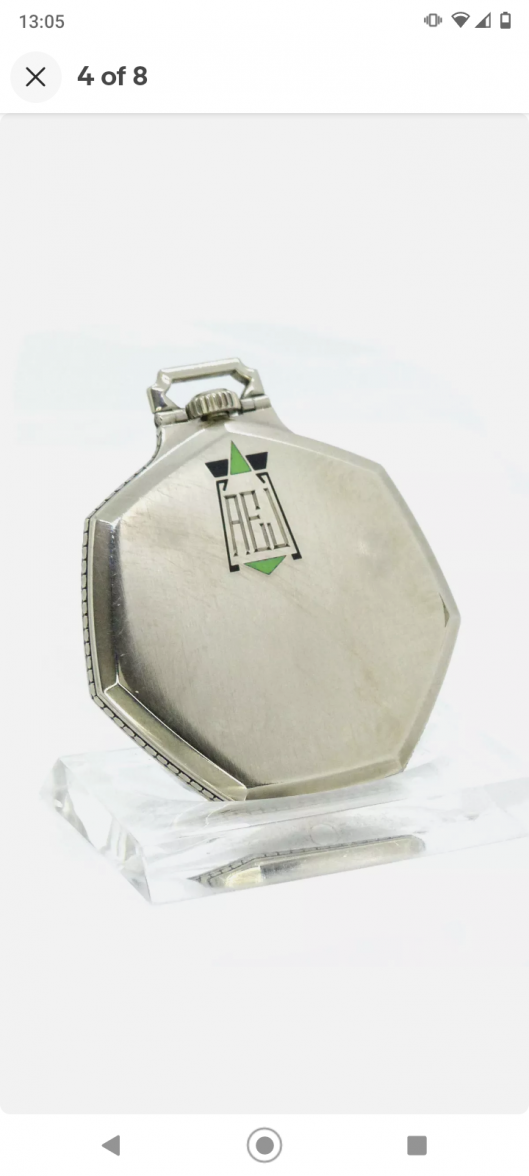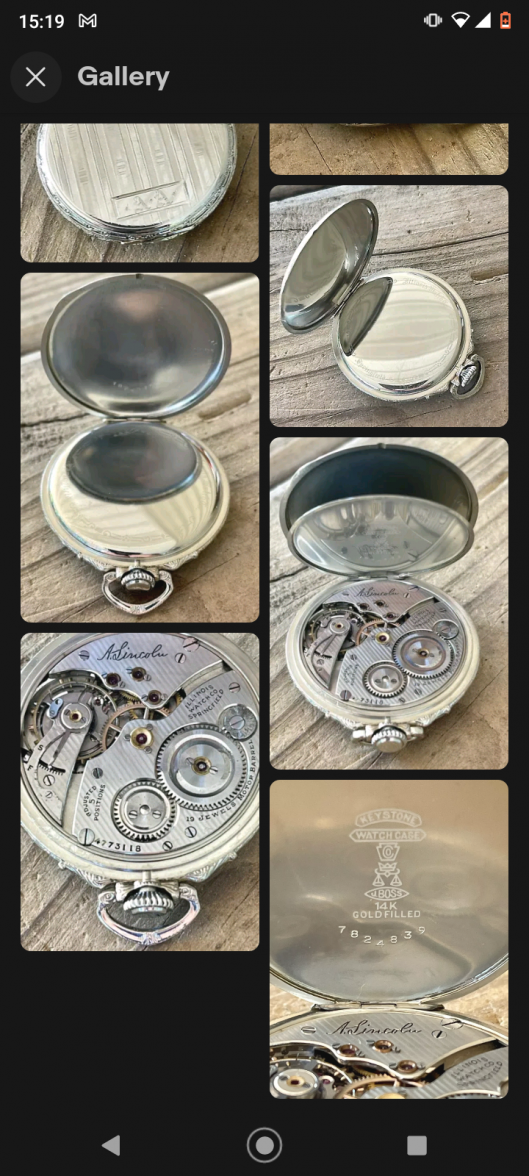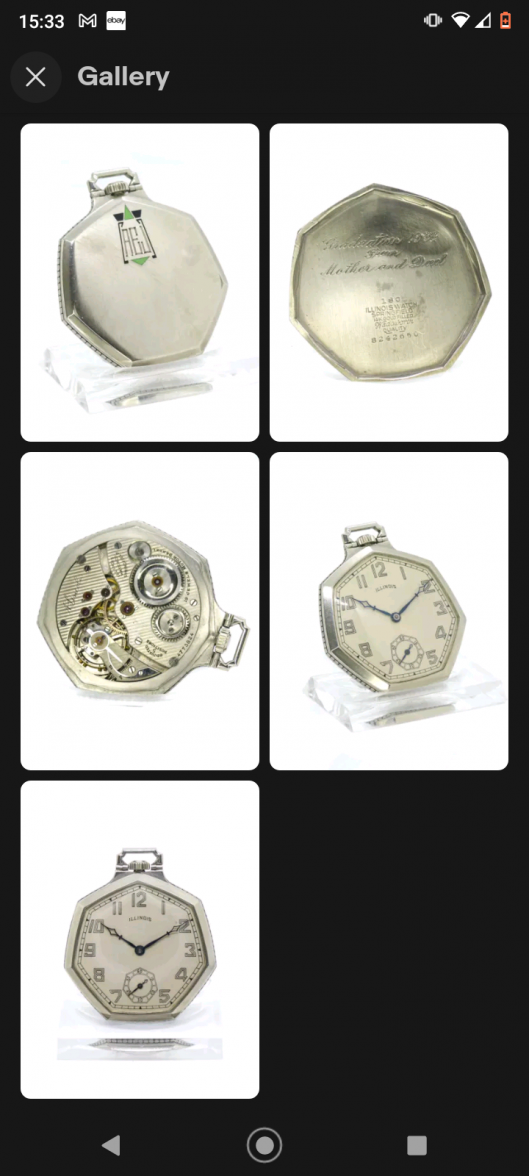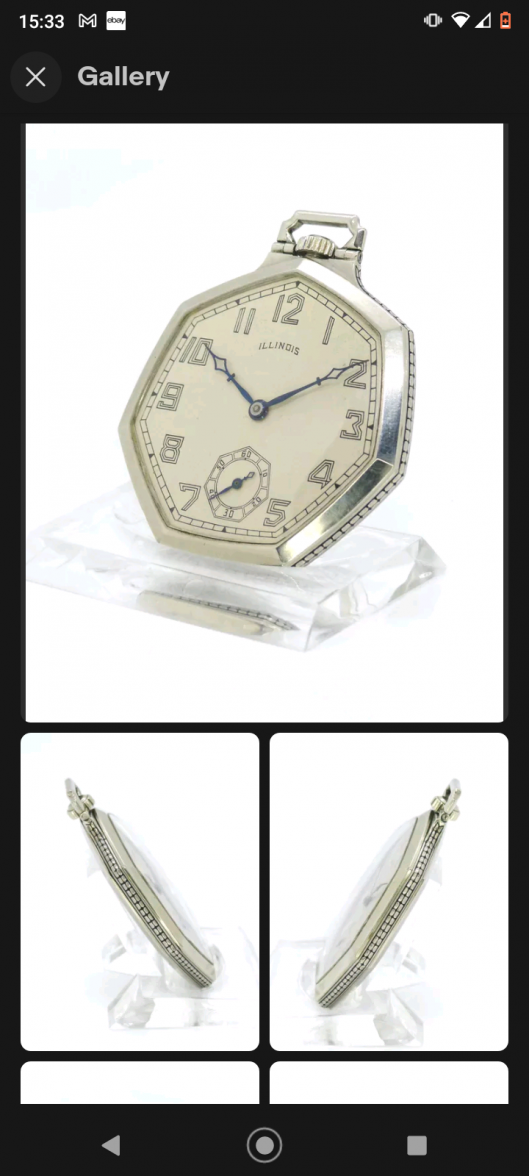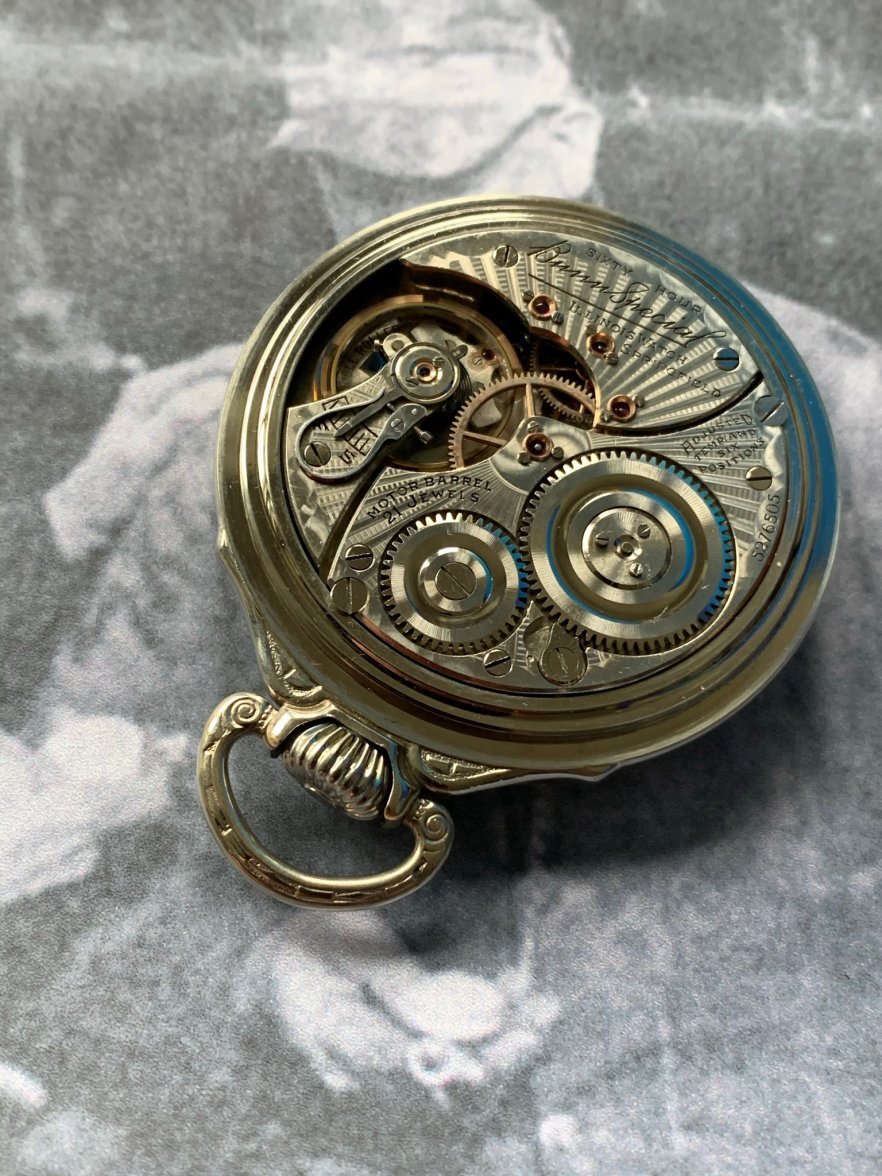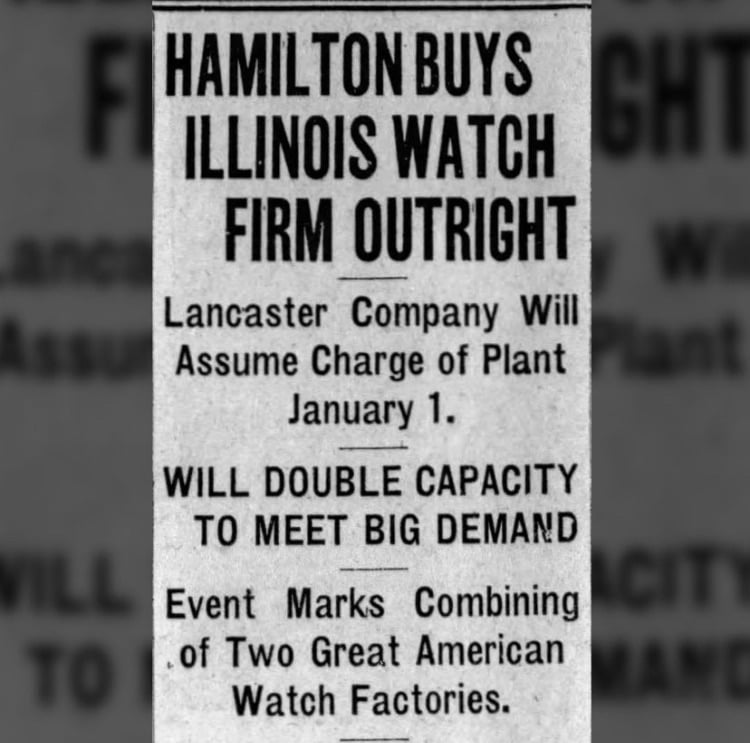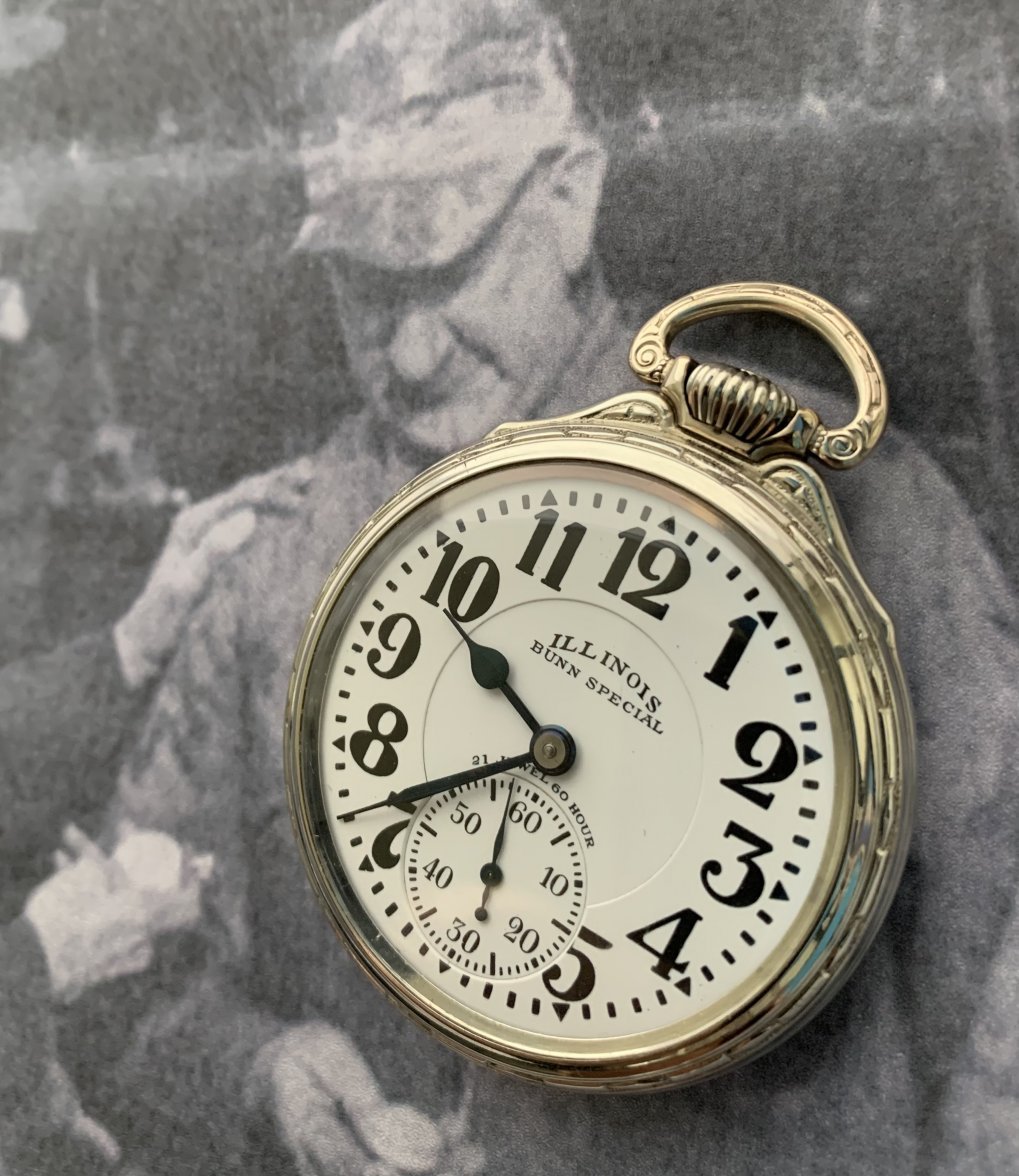Calling all Pocket Watch Buffs
Canuck
·The inner cover is usually called a cuvette, but most pocket watch people would know what you meant if you calle it a dust cover. Here is the skinny on @Pierre1333 ’s sharp Hamilton 922.
https://pocketwatchdatabase.com/search/result/hamilton/3000436
As to why no cuvette, maybe somebody will have an answer. Thanks for posting this fine example.
https://pocketwatchdatabase.com/search/result/hamilton/3000436
As to why no cuvette, maybe somebody will have an answer. Thanks for posting this fine example.
I wonder why this Hamilton doesn't have a dustcover ( if that's what you call it). Was it common to skip the beautiful Hamilton inscription ?
Pierre1333
·The inner cover is usually called a cuvette, but most pocket watch people would know what you meant if you calle it a dust cover. Here is the skinny on @Pierre1333 ’s sharp Hamilton 922.
https://pocketwatchdatabase.com/search/result/hamilton/3000436
As to why no cuvette, maybe somebody will have an answer. Thanks for posting this fine example.
Pierre1333
·I'm not a gambler unless it's a skins game but this is on my wishlist. Unfortunately I won't be buying it soon so I put this up here even though it's the best value for money example.sorry but you'll have to go to the website to check out the video
Pierre1333
·My gruen ultra verithin. Posted this already on wruw but I'm so proud of it I wanted to post it here. You don't see many 14k white gold gruens here in Europe so a German golddealer sold it to me. My only regret concerning this watch is it doesn't have the rare pentagonal glass. Otherwise it's one of my favourite watches. Works like a charm
Canuck
·I find this so cool I'm trying to buy this watch. Maybe I can show it soon if my German friend let's it go
Ooooh la la! Art Deco embellishment in vitreous enamel. Likely 1920s. An easy one to want. I’d like to see, more of it.
Pierre1333
·Ooooh la la! Art Deco embellishment in vitreous enamel. Likely 1920s. An easy one to want. I’d like to see, more of it.
Canuck
·The 'damage' to the subdial, could this of been caused by cleaning the silver dial? Or is it just wear of some kind? Edit: has to have been scrubbed in my opinion, pity
Likely a silver plated dial, clear coated to reduce tarnish, then the dial printed with numbers, name, and chapter ring. The clear coat eventually does what paint does. Oxidation, water damage, flaking and peeling? Your guess is as good as mine.
Pierre1333
·Likely a silver plated dial, clear coated to reduce tarnish, then the dial printed with numbers, name, and chapter ring. The clear coat eventually does what paint does. Oxidation, water damage, flaking and peeling? Your guess is as good as mine.
Edited:
Canuck
·@Pierre1333 , absolutely stunning. Here is the skinny on you beautiful Illinois watch.
https://pocketwatchdatabase.com/search/result/illinois/4773824.
The information in this listing refers only to the movement, but not the case. The movement is quite rare, but the case makes the watch even rarer. The pocketwatchdatabase.com listing shows the movement was made circa 1926 which fits right in the art deco era. A high grade 12-size movement in a very fitting case. Thanks for posting it.
https://pocketwatchdatabase.com/search/result/illinois/4773824.
The information in this listing refers only to the movement, but not the case. The movement is quite rare, but the case makes the watch even rarer. The pocketwatchdatabase.com listing shows the movement was made circa 1926 which fits right in the art deco era. A high grade 12-size movement in a very fitting case. Thanks for posting it.
Pierre1333
·@Pierre1333 , absolutely stunning. Here is the skinny on you beautiful Illinois watch.
https://pocketwatchdatabase.com/search/result/illinois/4773824.
The information in this listing refers only to the movement, but not the case. The movement is quite rare, but the case makes the watch even rarer. The pocketwatchdatabase.com listing shows the movement was made circa 1926 which fits right in the art deco era. A high grade 12-size movement in a very fitting case. Thanks for posting it.
Canuck
·I sometimes wonder about Americans bringing their watches over to Germany for their military duty and leaving them there for us lucky Europeans to pick up years later... Or maybe like my great uncle; some ppl just cherish American quality
The case back is marked for Illinois, but Illinois didn’t make cases. This case was made by Wadsworth. Some American watch manufacturers had agents in the British Isles and in Europe. Usually, exported American-made movements were fitted to domestic cases in the destination country, because of favourable tariffs. However, your American-made Illinois movement is fitted into an American-made case. So it likely emigrated to Europe in someone’s pocket, as you suggest may have been the case. Those of us who collect pre-owned watches have the folks who chose to dispose of them for making them available! 😁
Pierre1333
·Thanks for your info and passion Canuck, you're a legend. It's so much fun to share passion. May you have a beautiful sunday
DaveK
·I'm thinking this is a pre- Hamilton takeover Illinois. That's just because of the style of the dial. Otherwise I wonder if a pro could sort it out, cause she's a beauty.
There was some transition when Hamilton took over Illinois, changing Illinois Watch Co to Illinois Watch - dropping the “Co”
This is my 1929 post-takeover, without the “Co”
Canuck
·I'm thinking this is a pre- Hamilton takeover Illinois. That's just because of the style of the dial. Otherwise I wonder if a pro could sort it out, cause she's a beauty.
According to the Meggers & Ehrhardt “blue book” info, yours was made in mid-year, 1926. So about 2 1/2 years before Hamilton bought
There was some transition when Hamilton took over Illinois, changing Illinois Watch Co to Illinois Watch - dropping the “Co”
This is my 1929 post-takeover, without the “Co”
Illinois.
There is a gap in the serial number sequence in the Meggers & Ehrhardt “blue book” which omits this serial number range that yours belongs to.
Here is what “the book” says about the serial number range yours likely belongs in.
“ Most 16 size 21 jewel, 60 hour grade Bunn special watches were sold with dials marked just Illinois. However from 1930 on it was possible to obtain this grade with a dial marked Illinois Bunn special below the 12 and 21 jewels 60 hour above the seconds orbit. This latter style is preferred by many collectors and raises the value of the watch.The three varieties of 60 hour Bunn specials presently have about the same value although the type two is generally preferred and brings a little higher price because of its double marking.”
The type I serial number range ran from s# 4,492,001 to 4,747,000. Type II ran from s# 4,754,001 to 4,793,000. Type III s# ran from 4,804,001 to 5,255,000. This is where the gap omitting yours, occurs. It looks like it might be a type III. According to the “blue book”, Hamilton continued to produce only the type III Bunn Special 60-hour after the take over. Could you show us the dial?
Several of the other U S watch companies had toyed with the idea of producing a 60-hour running railroad watch, but Illinois was the only one to succeed. While the preponderance of Illinois watches prior to the Hamilton buy out were 12, 16 size, and the odd 18 size, after the buy out, Hamilton continued with Illinois 12, 16, and some 18 size offerings, but the preponderance was wrist sizes.
Edited:
DaveK
·According to the Meggers & Ehrhardt “blue book” info, yours was made in mid-year, 1926. So about 2 1/2 years before Hamilton bought
Illinois.
There is a gap in the serial number sequence in the Meggers & Ehrhardt “blue book” which omits this serial number range that yours belongs to.
Here is what “the book” says about the serial number range yours likely belongs in.
“ Most 16 size 21 jewel, 60 hour grade Bunn special watches were sold with dials marked just Illinois. However from 1930 on it was possible to obtain this grade with a dial marked Illinois Bunn special below the 12 and 21 jewels 60 hour above the seconds orbit. This latter style is preferred by many collectors and raises the value of the watch.The three varieties of 60 hour Bunn specials presently have about the same value although the type two is generally preferred and brings a little higher price because of its double marking.”
The type I serial number range ran from s# 4,492,001 to 4,747,000. Type II ran from s# 4,754,001 to 4,793,000. Type III s# ran from 4,804,001 to 5,255,000. This is where the gap omitting yours, occurs. It looks like it might be a type III. According to the “blue book”, Hamilton continued to produce only the type III Bunn Special 60-hour after the take over. Could you show us the dial?.
Thanks @Canuck , this one is a type III, with the less common white gold-filled case
